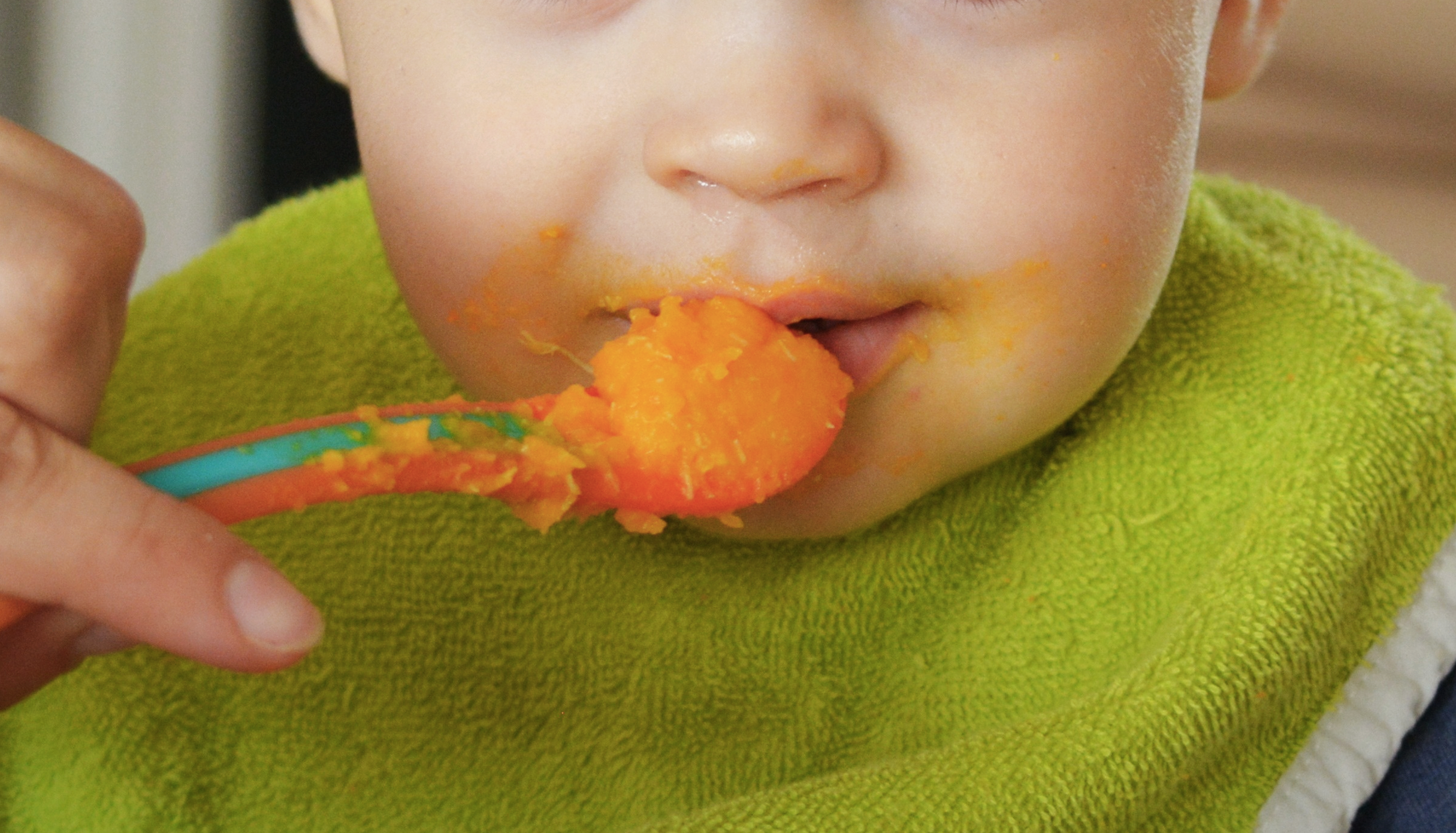 Introducing a baby to food is an amazing adventure. Having already given your charge their first delightful tastes of fruit and veg, it is time to move on. Whether you are doing baby led weaning or not, introducing foods gradually is crucial to allow babies to develop their taste buds and to ensure you are able to identify any allergies that appear.
Introducing a baby to food is an amazing adventure. Having already given your charge their first delightful tastes of fruit and veg, it is time to move on. Whether you are doing baby led weaning or not, introducing foods gradually is crucial to allow babies to develop their taste buds and to ensure you are able to identify any allergies that appear.
7-9 months..
When a baby has had a month or so of trying fruit and vegetables, they are ready to add more calories and nutrients to their diet. At this stage, allowing babies to chew on a piece of meat or blend it with their favourite vegetables is a great way to provide more protein and iron. Some babies struggle with these textures at first, especially if they are still lacking teeth, however, be patient and offer various forms of meat if need be.
Varying other textures and introducing them to items such as eggs, pulses, fish, rice, pasta is all on the menu so embrace them all. Adding herbs and a small amount of spices is a great way to get your charge accustomed to these flavours.
If you are pureeing food, you should be aiming to give your charge between 3-4 ice cubes of food per meal. They will tell you when they’ve had enough - it will be hard to miss the signs.
10-12 months..
Time for tantalising tastes and textures! At 10 months old, a baby will be used to having a range of meals and will expect to eat solid food as their main diet. Due to the increase in mobility, whether this be crawling, shuffling or walking (yes, some may be walking!), they will be burning energy fairly quickly. Therefore, they will need a varied and balanced diet to keep their energy levels up. With three meals a day and snacks to consider, this can lead to a lot of preparation.
Batch cooking meals, blending them up and freezing them in ice cube trays is a great way to be prepared, ensuring that their diet is healthy and includes a range of ingredients. Continue to give them the option of eating different textures until they develop a love of food.
First foods..
When introducing new foods, begin with root vegetables such as carrots, potatoes, sweet potatoes and butternut squash. Adding a little milk (breast or formula) to a pureed version will help to thin it down and provide the sweetness that babies are used to. Moving on to green vegetables, pulses, meat and bread is the next stage but be prepared to blend these if you are pureeing or use large chunks for babies to chew on if they are eating independently.
12 months and beyond..
At 12 months, babies will hopefully be at the stage where they are able to eat the same meals as you. Obviously, extra spicy food or food which is high in salt or sugar should still be avoided but otherwise, it is time to share your meals.
When a baby turns one, they are now able to move away from breast milk and formula and drink full fat cow’s milk. Increasing the calories through the milk along with the varied diet you provide will lead to healthy and happy children.
For some excellent tips and recipes at each stage, you could refer to:
☑ ‘Weaning’ by Annabel Karmel
☑ ‘The First Foods Book’ by Ella’s Kitchen
☑ ‘Baby-Led Weaning: Help Your Baby To Love Good Food’ by Gill Rapley and Tracey Murkett
☑ ‘River Cottage Baby and Toddler Cookbook’ by Nikki Duffy
Enjoy experimenting and get the bibs ready!